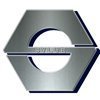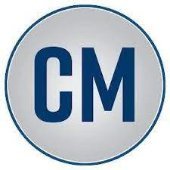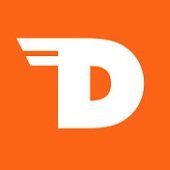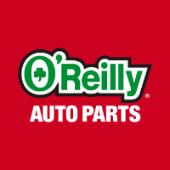-
Welcome to Auto Parts Forum
Whether you are a veteran automotive parts guru or just someone looking for some quick auto parts advice, register today and start a new topic in our forum. Registration is free and you can even sign up with social network platforms such as Facebook, X, and LinkedIn.
What is the difference between CNC milling and CNC turning?
-
Similar Content
-
Machining is very popular to be used in auto parts
By Jerry Zhang,
- machining
- machining parts
- (and 3 more)
- 0 replies
- 1,186 views
-
-
Similar Topics
-
By Clifford Auto Parts
If you’ve ever looked into car engine management systems, you’ve probably come across the terms ECM (Engine Control Module) and ECU (Engine Control Unit). While these terms are often used interchangeably, they are not exactly the same. Understanding the difference between ECM and ECU can help you diagnose vehicle issues, make informed repair decisions, and ensure your car runs efficiently.
At Clifford Auto Parts, we specialize in high-quality ECMs and ECUs, providing affordable replacements with free shipping across the USA. In this blog, we’ll break down the key differences between ECMs and ECUs, their roles in vehicle performance, and how to know when it’s time to replace them.
✅ What is an ECU (Engine Control Unit)?
The Engine Control Unit (ECU) is a broad term referring to any electronic module that controls various aspects of a vehicle's operation. Modern cars often have multiple ECUs that manage different systems in the vehicle, such as:
✔️ Engine Management (ECM) – Controls fuel injection, ignition timing, and emissions.
✔️ Transmission Control (TCM) – Regulates automatic gear shifting.
✔️ Brake Control (ABS Module) – Manages anti-lock braking systems.
✔️ Body Control (BCM) – Controls lighting, windows, and climate systems.
The ECU acts like the brain of the car, receiving signals from sensors and making real-time adjustments to optimize performance, efficiency, and safety.
✅ What is an ECM (Engine Control Module)?
The Engine Control Module (ECM) is a specific type of ECU dedicated to managing the engine’s performance. It ensures the correct amount of fuel, air, and spark is delivered to keep the engine running smoothly.
A faulty ECM can cause serious performance issues, including:
✔️ Check Engine Light Staying On
✔️ Engine Stalling or Misfiring
✔️ Poor Fuel Efficiency
✔️ Starting Problems
At Clifford Auto Parts, we offer tested and warrantied ECM replacements for Ford, Dodge, Jeep, Chrysler, and more, ensuring a plug-and-play experience for vehicle owners across the USA.
✅ How Do ECM and ECU Work Together?
While the ECM specifically controls the engine, it still communicates with other ECUs in the car. For example:
✔️ The ECM and TCM (Transmission Control Module) work together to ensure smooth gear shifting.
✔️ The ECM and BCM (Body Control Module) coordinate engine start functions with security and lighting systems.
✔️ The ECM interacts with the ABS Module to adjust power delivery during emergency braking situations.
Modern cars rely on these interconnected systems to provide seamless driving performance.
✅ When Should You Replace Your ECM or ECU?
If your vehicle is experiencing engine trouble, transmission issues, or persistent warning lights, you may need to replace the ECM or a specific ECU. Some warning signs include:
✔️ Check Engine Light stays on, even after repairs
✔️ Sudden drops in fuel efficiency
✔️ Rough idling, stalling, or misfires
✔️ Transmission shifts erratically or gets stuck in a gear
✔️ Car fails to start despite a working battery
Ignoring these symptoms can lead to costly repairs. The best way to diagnose the problem is to use an OBD-II scanner to check for ECU or ECM-related fault codes.
✅ Why Choose Clifford Auto Parts for ECM & ECU Replacements?
At Clifford Auto Parts, we specialize in providing high-quality, reliable ECM and ECU replacements that fit seamlessly into your vehicle. Here’s why thousands of vehicle owners trust us:
✔️ Wide Selection: We offer ECMs & ECUs for Ford, Jeep, Dodge, Chrysler, and more.
✔️ Lifetime Warranty: All our ECMs come with a lifetime guarantee for peace of mind.
✔️ Fast & Free Shipping: Get your replacement within 3 business days, anywhere in the USA.
✔️ Affordable Pricing: Save hundreds of dollars compared to dealership prices.
✔️ Plug-and-Play Compatibility: Our ECMs are programmed and ready to install.
Don't let a failing ECM or ECU slow you down! Shop today at link hidden, please login to view for top-quality replacements.
✅ Final Thoughts
Understanding the difference between ECM and ECU helps car owners diagnose vehicle problems, make informed repair decisions, and ensure long-term performance. While ECUs control multiple car functions, ECMs specifically manage the engine’s performance.
If you're facing engine issues, poor fuel efficiency, or transmission troubles, it may be time to replace your ECM or another ECU module. At Clifford Auto Parts, we provide tested, warrantied, and affordable ECMs and ECUs to keep your vehicle running like new.
🚗 Need an ECM replacement? Visit link hidden, please login to view today!
📞 Questions? Call (516) 494-7838 for expert assistance.
-
By Counterman
The standard automotive powertrain for the majority of the 20th century was the front engine, rear-wheel-drive (RWD) design. The rear axle assembly housed the differential and individual axles, and it is through this assembly that power was transferred to the wheels.
Even though both front-wheel-drive (FWD) and four-wheel-drive (4WD) cars were also designed and manufactured during the early years of the automobile, they didn’t flourish and the durability and simplicity of the typical RWD design made it the sole choice of automobile platforms for many manufacturers.
In a typical RWD vehicle, the power generated by the engine is transferred through the transmission to the driveshaft, differential and axles to the rear wheels. In a typical 4WD vehicle, a differential/axle assembly is located at the front of the vehicle, and to transfer power to the front, a transfer case is also installed after the transmission and a short driveshaft is installed between the transfer case and front axle.
You will also notice that the front differential/axle assembly is different in two ways. One, the differential location is offset for clearance since the engines were always mounted in the center and, two, since the front wheels must turn to steer the vehicle, the axles must have some type of articulating joint at the end, the most common of which is the traditional Universal Joint (U-Joint.)
The transfer case transfers the power that exits the transmission to either the rear wheels (RWD), or the front and rear wheels at the same time (4WD.) Another feature of a traditional transfer case is that it offers both high and low ranges in either RWD or 4WD positions, as well as a neutral position. This is so that if the vehicle must overcome particularly difficult terrain, it can be placed in the low range so the engine will operate at a higher RPM to provide additional torque to the wheels. The high range is 1:1, which means the output speed of the transfer case is the output speed of the transmission. The low range ratio varies depending on manufacturer.
An important aspect of all this is differential operation. The differential itself transfers the power from the driveshaft to the axles, and it is necessary because it allows power to be transferred to the wheels, but also allows them to travel at different speeds when turning a corner. A conventional differential is considered an “open” design. An operating characteristic of an open differential is that it transfers power to the wheel that spins the easiest.
As an example, if one wheel is on ice, that wheel will spin, resulting in minimal traction. The same affect is what causes a car under heavy acceleration to “burn rubber” with only one wheel. To combat this problem, there is another type of differential that is referred to as “limited slip.” There are many different names for this type of differential depending on the manufacturer, but their operation is the same.
A limited slip differential contains clutch packs built in between the side gears and the differential case. When one wheel begins to spin from loss of traction, the clutches will grab and transfer power to the other wheel. The same clutches will slip just enough to allow the wheel speeds to differ when going around a corner, so the normal differential action is still available.
The majority of cars and trucks on the road come standard with open differentials, due to the additional cost of limited slip. Limited slip differentials have always been an option, just not standard. So, on a four-wheel-drive vehicle equipped with open differentials, technically speaking, the maximum number of wheels that can put power to the ground at any given time is two…kind of funny on something known as a 4×4, but it’s still twice as much traction as RWD only, and for the most part it got the job done. Most people who were really going to be in some serious off-road situations would be sure they were equipped with limited-slip differentials.
4WD, as it was originally developed, was a rather primitive system that required input from the driver, from engaging to transfer case to engaging hubs on the front wheels in many cases. Technology was the eventual downfall of rudimentary 4WD systems as we know them, but the drive to utilize this technology came from the safety benefits of AWD.
The ability to transfer power to all four wheels has incomparable benefits for traction, vehicle stability and handling. Not only does this translate to the safety of daily driven vehicles, but it translates to performance, as well.
With the advancement of computer and electronic technology, antilock braking systems (ABS) and traction control systems (TCS) all of a sudden knew exactly what was happening at each wheel at all times. Was it losing traction, was it locking up under braking? All this data was now available, and engineers knew that the key to vehicle performance, safety and handling all together, was in the ability to precisely control what happened at each wheel at any given point in time.
Traditional differentials, even limited slip, were mechanical devices. There was no external control of how they operated. With electronics and computer control, the traditional differential became a technologically advanced unit containing not only gearsets, but clutch packs like those in an automatic transmission, and their own pumps to pressurize the fluid.
The same technology is present in both front and rear differentials, as well as center differentials/transfer cases. AWD systems have the ability to precisely control the amount of torque that is transferred to any given wheel at any point in time, providing absolute control of the vehicle.
In conclusion, 4WD is functional, durable, rough and tough, but not user friendly. AWD, the product of technology, computers and electronics, is technologically superior, and provides the safety feature we rely on in today’s vehicles.
The post
link hidden, please login to view appeared first on link hidden, please login to view.
link hidden, please login to view -
By Carib Auto Parts
At some point, every car owner will need to replace a part of their vehicle. Regarding buying or replacing auto parts, two main options are available:
OEM Car Parts Aftermarket Car Parts Both options have pros and cons, but what is the difference? In this blog, we’ll look closer at OEM Car Parts and Aftermarket Car Parts to help you decide which option is best for your vehicle.
What are OEM Car Parts?
What does OEM mean? OEM stands for “original equipment manufacturer.” OEM Parts are made by the same company that produced the original part of your vehicle. These parts are made to the exact specifications as the original ones, ensuring they fit and function as intended. One of the main benefits of using OEM parts is that they are often covered under warranty. You can usually replace the part for free if something goes wrong. OEM parts are also known for their high quality, as they are made to the same standards as the original parts.
What are Aftermarket Car Parts?
Aftermarket parts are parts that the original manufacturer does not make of a vehicle. Instead, they are produced by third-party manufacturers and sold as replacements for OEM parts. Aftermarket parts can include various products, including mechanical parts such as engines, brakes, and transmissions, and cosmetic parts such as body kits and spoilers. Aftermarket parts are often designed to be interchangeable with OEM parts, meaning they should fit and function just like the original part. However, there are some differences in quality and price between aftermarket and OEM parts. While aftermarket parts are often more affordable, they may need to meet the same quality standards as OEM parts. A broader range of options may be available for customization and upgrades. Vehicle owners should carefully consider their options when choosing between aftermarket and OEM parts and ensure they purchase from a reputable manufacturer that offers high-quality products.
What is the best Choice Between OEM and Aftermarket Parts?
There are a few factors to consider when choosing between OEM and aftermarket parts. The first is cost. OEM parts are often more expensive than aftermarket parts, but they also have the added assurance of quality and warranty protection. On the other hand, Aftermarket parts are generally less expensive, but it can be more difficult to determine the quality of the part.
If you are looking for a high-quality part covered under warranty, OEM parts may be the best choice. However, if you are on a low budget or need a more versatile part, aftermarket parts may be how you want to go. Ultimately, the most important thing is to research and choose a part that will fit and function as intended.
How Carib Auto Parts can help you source OEM and Aftermarket Car Parts?
link hidden, please login to view want to let you know that we help you source OEM and Aftermarket parts from Japan and the USA. We understand how frustrating it can be to search for the right parts, especially when unsure where to look or how much it will cost. That's why we offer a service that takes care of everything for you, including the cost of the part, the cost of shipping, and all applicable taxes and customs duties. When you come to us for your auto parts needs, we'll provide you with a fully landed price that includes all these costs. This way, you don't have to worry about surprise charges or fees. We have established relationships with reliable suppliers in Japan and the USA, which allows us to source high-quality parts at competitive prices. We can help you find what you want, whether you need OEM or aftermarket parts. We aim to make sourcing auto parts as easy and hassle-free as possible for our customers.
If you have any queries, Visit link hidden, please login to view or link hidden, please login to view
-
-
By OReilly Auto Parts
All-wheel drive, 2-wheel drive, and 4-wheel drive are common automotive terms, but which one is better and how do they function ...
-







Recommended Posts
Join the conversation
You can post now and register later. If you have an account, sign in now to post with your account.
Note: Your post will require moderator approval before it will be visible.